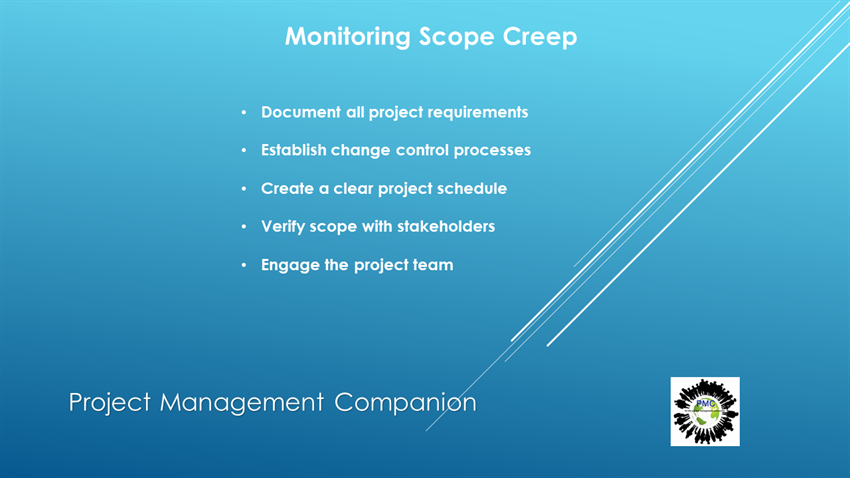Project Tracking Essentials

Project tracking is an essential part of staying on schedule and within budget. A project management method used to track the progress of tasks in a project. By tracking projects, it is possible to compare actual planned progress, and identify issues that may prevent the project from staying on schedule and within budget.
Project tracking helps project managers and stakeholders know what work has been done, the resources that have been used to execute those tasks, and helps them create an earned value analysis by measuring project variance and tracking milestones.
Key to project tracking is the use of project tracking tools and project management techniques. For example, status reports allow managers to track project progress by providing an overview of tasks, risks and milestones at any point of the project life cycle. Other types of project reports like progress reports can gather extra details that provide further insight into deliverables and performance. This data can then be distributed to the project team and stakeholders to keep them updated.

A project tracker is a tool that lets managers measure the progress of their team as they execute tasks and use resources. It’s an essential tool to keeping projects on schedule and within their budgets.
The use of project management software to track projects is recommended. Online tools are updated in real time, and that data is shared throughout the software. It can then create reports with live data to help make better decisions.
Tracking the progress of projects can seem like a daunting task, but by laying out the process and planning ahead, is a pathway to success. The following are a few ways to get on the right track;
- Start with a project outline
- Create deliverables and milestones
- Set realistic, clear and measurable goals
- Use a project tracker template or a project tracking software to keep track of time, costs and tasks
- Meet regularly with team and stakeholders
- Have clear deadlines
- Support transparency

These suggestions are structural and should be set up for every project. They can work with project tracking software to give project managers the details they need to hold their teams to the planned schedule and budget.
Additionally, with project tracking, it’s important to remember the triple constraint, which are time, cost and scope. The key to managing these interrelated variables is proper estimation and control. First estimate costs to create a project budget, the time that tasks will take to create a project timeline and the project scope to create the project schedule. Then control them during the execution phase by using a project tracker that allows for tracking of time, costs and tasks.
Project tracking software is the best way to keep track of projects because it monitors all the tasks associated with project and helps to stay on schedule. Most project tracker software is not used only for tasks; it can also keep track of budget and resource management.

A project tracker is useful even before the execution phase of a project. During planning, it can help manage the resources needed to complete the tasks. When in the monitoring and control stage of the project, the software can be of real assistance, providing visibility of actual progress.
Using a project tracking software is essential to manage any project. It provides a tool to control the triple constraint of time, cost and scope. Managers know when tasks are completed and that they’re not sucking up more than the allocated costs and resources.
As the execution phase progresses, it’s important to report on project progress so the schedule doesn’t go astray. Comprehensive project reports include six elements:
Start with the basics. What is the project’s name? Who will be managing the project? What are the available resources? Effective time, cost and task tracking requires detailed information. Provide the information which is needed, even if it seems like overkill. This helps things run smoothly, and also sets groundwork for the project to be referenced as a precedent when future projects are being planned.
Report dates are the most important project status information. Also, data separating status reports from other reports crossing stakeholders’ desks should be visible to grab attention.
Milestones are major touch-points for the project. They play an essential role when it comes to time tracking because they serve as a guidepost for remaining work, and the timeline for it to get done. Conducting a milestone review lets stakeholders see actual progress versus what was estimated in the project proposal.
The project summary includes a projected completion date, as well as resources and costs expended. Inclusion of issues causing delays is an important summary component. There should be a clear explanation of how these issues could affect budget and timeline, and work being done to ensure things are corrected to get the project back on track.

List issues and risks encountered, note how these are being resolved. Finally, outline how resolutions are positively impacting project execution. Risk assessment and risk management processes must be implemented throughout the project life cycle.
Back up statements with hard numbers and data points. Project planning details should have outlined these metrics. Show how data illustrates the success of the project to date, or, highlight needs for immediate improvement. Determining metrics to measure project progress is essential for tracking tasks, time, costs and managing teams.
There are some project reporting best practices to consider:
- Communication is the cornerstone: Status reports are a key element of communications plan. However, these reports don’t have to cover everything, and be all things to all people. Writing reports in a way that delivers the right information to the right people, at the right time, should be the overarching goal. Weekly status reports are the most common to keep track of project progress.
- Be consistent: Consistency is key. Find a format and distribution method that works for stakeholders, and stick with it. They’ll appreciate the predictability of the information they receive.
- Set targets and measure against them: Establishing metrics is an important part of project reporting and monitoring. Accordingly, these metrics should be how project progress is measured against goals throughout its life-cycle.
- Keep things simple: Keep reports simple to ensure effectiveness. Don’t pull in details unrelated to the issue on which you’re reporting.
- Always verify what you’re reporting: It’s a bad idea to assume information is correct without doing due diligence to ensure it is.
- Have some standards: Reporting simplification is made easier through creation of standards defining report structure, and how information is presented. Given this, building templates to make the work easier is a great first step.

Throughout any project, it’s important to evaluate reporting to avoid scope creep. As project teams start to work, and silos of activity develop, it’s vital to keep everyone aligned. This ensures project scope doesn’t creep.
Defining the project scope and keeping track of it must be a priority for every project manager. There are five ways to avoid scope creep:
- Document all project requirements: We’ve covered this at length, above.
- Establish change control processes: If scope creep happens, it’s important to have change control processes in place to bring things back on track.
- Create a clear project schedule: A thorough project schedule outlines project goals. It outlines tasks to be done to reach those goals. This schedule is referenced against the project plan’s requirements document to make sure everything is moving forward. If not, the schedule sets the course for tweaks or changes.
- Verify scope with stakeholders: It’s worthwhile during a project’s lifecycle to review scope with all stakeholders. Reviewing the schedule together, and making sure all tasks stakeholders are expecting to be done on a given timeline is also a good idea.
- Engage the project team: Make sure your project team is happy with how things are going throughout the project. As the change control process starts to take hold, let the team know how it will affect them. Weekly 1:1 meetings or team meetings to review tasks, and also overall project progress is a great way to keep your team engaged.

Project reporting can be challenging, but it doesn’t have to be overwhelming. Taking things step-by-step can help ease anxieties among everyone involved, and ensure a winning result. Make sure you use project management software, or at least a project tracking template, to facilitate the creation of reports.
Project reporting can be tough, but also efficient with the right tools. Tool can make collaboration and development of project reports less time-consuming and more intuitive. Let us know your thoughts and methods on project tracking. All the very best on your project management journey.

